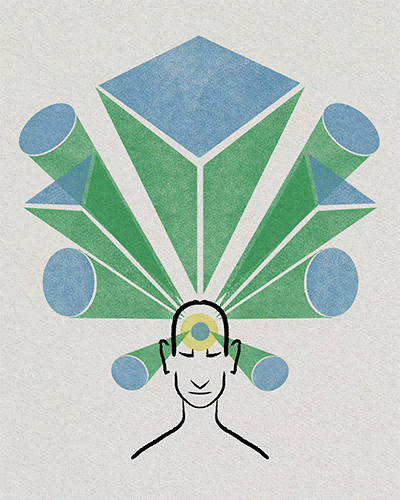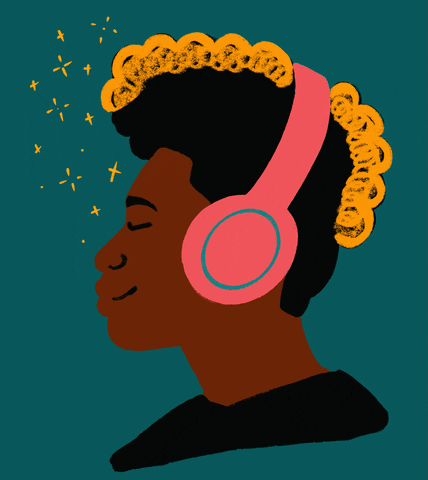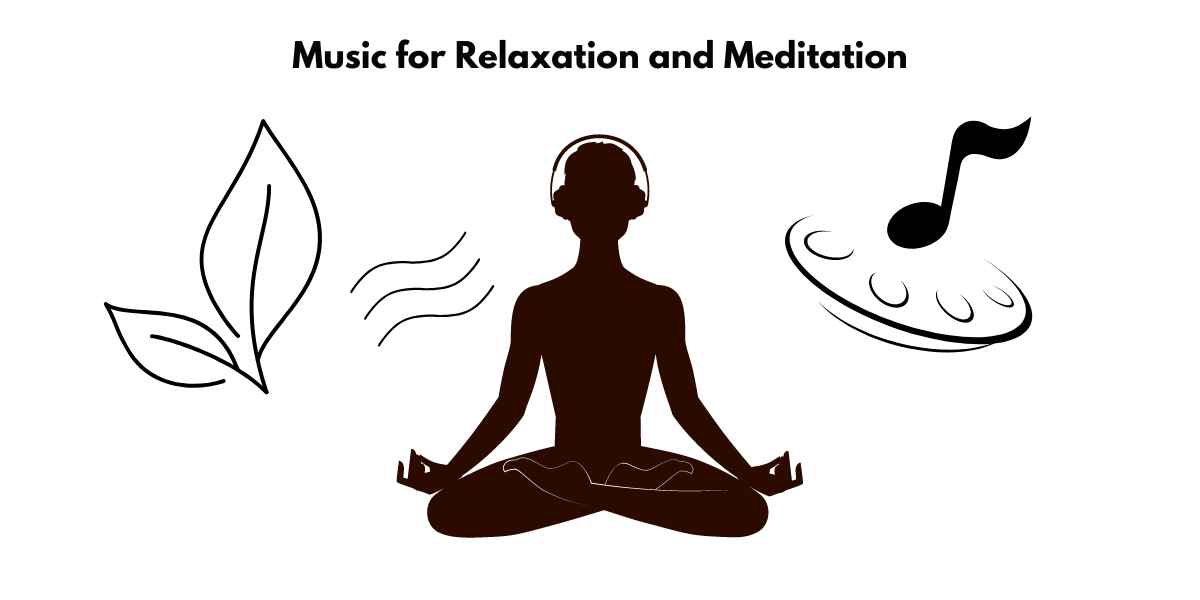Best Meditation Music Sound: The Great Soothing Songs for Mindfulness
Unraveling the Harmony of Meditation
The Intricacies of Soothing Sounds for Mindfulness
Meditation involves various techniques to achieve a mentally clear and emotionally calm state. For many, the best meditation music plays a pivotal role in this spiritual practice by providing auditory guidance toward tranquility. Whether it’s the delicate pattern of rain or the rhythmic chiming of Tibetan singing bowls, these sounds can transport the mind to a state of deeper focus and relaxation. Engaging with gentle acoustics can ease the process of centering our thoughts and finding stillness amidst life’s chaos. Adding the element of meditation sleep music, such as ambient binaural beats, can even facilitate a journey towards deep sleep meditation, encouraging restorative sleep cycles and heightened inner peace.
The Impact of Music on Meditation and Mental Well-Being
Music possesses a subtle yet profound influence on our psyche and can significantly amplify the benefits of meditation. This intertwining of melody with mindfulness facilitates a profound engagement with the present moment. Introducing the best meditation song collection into this practice can richly enhance the experience, as soothing instrumentals enable higher proficiency in calming the mind and centering one’s focus. Removing lyrics minimizes mental chatter, allowing for an undistracted and more potent entrée into the peaceful realms that meditation offers. The absence of words in music acts as a canvas for personal reflection rather than narrative thought, crucial for deep meditative states.
Emerging studies, backed by statistics, further validate the physiological impacts of meditative music. Relaxing tunes have been shown to curtail blood pressure and heart rate in hypertensive individuals, thereby mitigating the risks associated with high stress. According to data gathered, pre-operative patients exposed to the right music—tracks devoid of sharp crescendos or lyrics—exhibited markedly lower anxiety when compared to those void of this auditory interlude. These findings corroborate the assertion that, when integrated with meditation, music can be a robust adjunct to mental and physical health interventions.

The Symphony of Serenity: Top Soothing Songs
Nature’s Own Melodies: Exploring Ambient Tracks
Ambient music, while not the most flamboyant genre, is a masterful conductor of calm, proving itself invaluable in the quest for serenity and focus during meditation. Nature’s own symphony, with its unrehearsed harmonies, provides a quintessential example of ambient soundtracks tailor-made for mindfulness practices. The tranquility of a forest or the steady cadences of ocean waves encapsulates the essence of relaxation and meditation.
The gentle, ambient tracks often combine the soothing frequencies of nature with minimalist instrumental arrangements, creating a soundscape that is both immersive and non-intrusive. The unstructured flow of these compositions mirrors the natural world’s rhythms and is particularly adept at fostering a profound sense of inner peace.
Classical Touch: Timeless Pieces for Relaxation
Classical music, with its intricate tapestry of harmonies and melodies, has long been a companion to those seeking solace and a retreat into quietude, making it an excellent companion for meditation and relaxation. The timeless quality of classical compositions provides a sense of continuity and flow that is essential for a deep meditative experience.
One of the most pertinent examples of classical music’s calming effect is Erik Satie’s “Gnossienne No. 1”. This piece, with its ethereal and introspective melody, encourages a contemplative state, making it ideal for those moments dedicated to inward focus. The composition’s rhythmic flexibility allows for personal interpretation and syncs well with the ebb and flow of meditative breathing patterns.

Crafting Your Perfect Meditation Playlist
Balancing Tempo and Rhythm for Mindful Relaxation
In the confluence of music and meditation, tempo and rhythm serve as the backbone of auditory serenity. The human heart and mind respond inherently to these elements, responding to slower tempos and measured rhythms with a decrease in heart rate and blood pressure — natural indicators of relaxation. As such, crafting a meditation playlist requires a delicate balance between the tempo and rhythm that aligns with the goal of achieving mindful relaxation.
The interplay between a slow tempo and a moderately repetitive rhythm can act as an auditory cue to slow down breathing and, consequently, usher in a state of calm. In contrast, melodies that are too fast or rhythms that are too complex may inadvertently elevate stress levels or distract from the meditative process.
A tempo that mirrors the resting heart rate, typically between 60 to 80 beats per minute, is conducive to mindful relaxation. In this vein, “Weightless” by Marconi Union is meticulously crafted to reduce anxiety, constituted by beat patterns that gradually slow to match this restful heart rate. Research in sound therapy indicates that such music can induce a trance-like state where the listener’s internal rhythms synchronize with the track’s beat, promoting profound relaxation and focus.
Instrumental Wonders that Uplift the Soul
Instrumental music, unfettered by the specificity of lyrics, presents a universal language that can elevate the soul and complement the journey of meditation. The beauty of instrumental compositions is their ability to transcend cultural and linguistic barriers, resonating with listeners on a purely emotional and spiritual level. These aural delights, ranging from classical piano solos to modern ambient electronic pieces, have the capacity to uplift and transform the meditative experience.
Melodies from instruments such as the piano, harp, or cello offer warmth and substantiality that can harmonize with the meditator’s inner world. Consider Ludovico Einaudi’s works, which are imbued with a transcendent quality that can gently guide listeners into deeper states of introspection. His pieces like “Nuvole Bianche” and “Le Onde” are revered for their simplicity and emotional depth, offering a soothing backdrop conducive to meditation.
The emotional timbre of stringed instruments, when woven into the fabric of a meditation session, can also facilitate a sense of release and contemplation. Tracks like “Meditation from Thaïs” by Jules Massenet, performed by the virtuosity of violinists like Joshua Bell, exhibit a poignant blend of melancholy and hope, inspiring a reflective space within the listener.

Integrating Meditation Music into Daily Routines
Optimizing Your Morning Ritual with Harmonious Tunes
Incorporating harmonious tunes into your morning ritual can set a positive tone for the day and optimize mental and emotional well-being. The right selection of music in your morning meditation can help you wake up, foster relaxation, and prepare your mind for the tasks ahead.
Studies have highlighted that music can be as stimulative as a cup of coffee, and when blended with meditation, it becomes a powerful tool to ignite your morning with intentionality and focus. Starting your day with a sunrise meditation accompanied by songs that bridge vigor with serenity can energize you while ensuring you remain grounded and centered.
The “Morning Meditation” playlist is an excellent example, tastefully combining energizing tunes with more laid-back melodies. It serves as an acoustic stimulant for the mind, mirroring the gentle rise of the sun with gradually uplifting harmonics. Applying the concept of the ‘golden hour’ in photography to music, these tunes can be your auditory golden hour, capturing the moment of transition from rest to activity.
Nature sounds, embedded within morning meditation pieces, are particularly effective for aligning with the fresh start of a new day. The sound of chirping birds and rustling leaves can simulate an aural environment of natural awakening, contributing to the feeling of a fresh and organic commencement of your daily journey.
The Role of Soothing Songs in Evening Wind-Downs
As the day draws to a close, the right soundtrack can transform evening routines into restorative rituals. Soothing songs serve as a gentle reminder to slow down and prepare both mind and body for a rejuvenating sleep. Utilizing the therapeutic qualities of calming music during evening wind-downs can significantly enhance the quality of rest and contribute to overall well-being.
Research indicates that music with a slow tempo, especially in the range of 60-80 beats per minute, can synchronize with the body’s resting heart rate, encouraging physiological relaxation. This phenomenon, known as ‘entrainment,’ allows the body to ease into a state primed for sleep. Ensuring your night-time playlist includes tracks with these characteristics could be instrumental in fostering deeper relaxation.
Pieces such as “Sleep Music Delta Waves”, with their incorporation of delta frequencies, support the brain’s natural transition into the stages of deep sleep. Similarly, tracks like “Tranquility Music for Deep Sleep” weave in harmonies that are designed to quiet the mind and alleviate the cares of the day, which can often stand in the way of restfulness.
Even the naming of certain compositions can psychologically prime one for sleep; titles such as “Deep Sleep Music” are not chosen idly. They are usually indicative of a piece’s gentle ebb and flow that mirrors the natural rhythm of breath and heartbeat during rest.
By allowing for a period of decompression, soothing songs can also create a buffer between the day’s activities and the night’s rest. The act of listening becomes an auditory signal to the body to release tension, letting go of thoughts and concerns from the day, making way for calm and centeredness.

Journey Beyond Sound: Discovering Music Therapy
The Science Behind Musical Elements and Stress Relief
The connection between music and stress relief is not just anecdotal; there is a strong body of scientific evidence corroborating the relationship between musical elements and their effects on alleviating stress. Understanding the science behind this connection can help individuals curate the right kind of musical environment to support their stress management and relaxation goals.
One key element is the tempo of music. Research has shown that music with a slow tempo can induce a calming response, slowing the heartbeat and lowering blood pressure. This physiologically soothing effect is often attributed to the entrainment principle, where the biological rhythms of the body start to synchronize with the beats of the music.
Another element is rhythm and beat. Repetitive and predictable rhythmic patterns can have a hypnotic effect, promoting relaxation and focused attention. This is why rhythmic drumming or the repetitive sound of a gong or bell is often featured in meditation music.
The pitch is also a significant factor; typically, lower pitches are found to be more calming than higher pitches, which can sometimes be perceived as more arousing or alerting. The rich, deep sounds of a cello or piano can resonate with listeners in a way that feels grounding and soothing.
Harmony and melody have their roles as well—consonant harmonies and simple melodies are typically more relaxing than dissonant harmonies and complex melodies, which can invoke more cognitive engagement or emotional distress.
The timbre, or the unique “color” of sound, is also essential. Sounds that are “smooth” or “warm” can produce a calming effect. This is why certain instruments—such as the flute or the human voice at a low, soft volume—are commonly heard in music that aims to relax the listener.
Lastly, the volume of music plays a critical role. Softer volumes are conducive to relaxation, while louder volumes can stimulate the brain and potentially increase stress levels.
Functional magnetic resonance imaging (fMRI) studies have helped shed light on how music can evoke emotion-related brain responses which can stimulate the release of stress-reducing hormones. Listening to music that one finds calming or uplifting can initiate beneficial neurochemical reactions, including the release of dopamine, which is a neurotransmitter associated with pleasure and reward.

Real-Life Testimonials: Transformative Effects of Meditation Melodies
The transformative effects of meditation melodies are best illustrated not only through scientific research but also through the experiences of individuals who have integrated them into their lives. Real-life testimonials offer insights into the profound impact that music when combined with meditation, can have on an individual’s mental, emotional, and physiological state.
An example comes from Emma, a graphic designer who battles with anxiety and stress from her high-paced work environment. She shares, “Starting my day with a meditation session accompanied by soothing piano melodies has completely changed my outlook. The music helps me center my thoughts and sets a peaceful tone for the rest of my day. I’ve noticed a significant decrease in my anxiety levels and an increase in productivity.”
Similarly, David, a retired veteran who suffered from insomnia and PTSD, recounts his experience: “The sound of Tibetan singing bowls and gentle nature sounds at night have been a game-changer for me. They not only help me fall asleep faster but have also improved the quality of my sleep. I feel more rested and calm throughout the day.”
Maria, a yoga instructor, incorporates meditation music into her classes to deepen the practice. “I’ve received feedback from many students who feel that the ambient sounds we play during sessions help them dive deeper into their meditation. They’ve described experiencing more profound stillness and introspection, which they take with them off the mat.”
Aiden, a software developer who practices mindfulness to cope with the intensity of his job, says, “Binaural beats have been instrumental in my stress management routine. They help me disconnect from work worries and achieve a balanced state of mind. I’m able to return to my tasks with a fresh perspective after my meditation breaks.”
Sophia, who started meditation to cope with grief, found solace in choral music. “Chanting and choral pieces provided me a sense of connection and comfort during the toughest times. It’s as if the harmonies carried some of my pain away and allowed me to find moments of peace.”
These personal accounts, and countless others like them, authenticate the role of meditation melodies in promoting mental tranquility, reducing stress and anxiety, enhancing sleep quality, and imparting a sense of overall well-being. They echo the universality shared by many who have found solace in the rhythmic structures and harmonic compositions specifically designed to support meditative practices. By weaving together the anecdotal with the empirical, the transformative power of meditation melodies is increasingly recognized as an accessible and valuable component in the pursuit of wellness and balance in contemporary life.
FAQs: Your Questions Answered About Meditation Music
What Makes a Song Suitable for Meditation?
A song’s suitability for meditation is determined by certain key characteristics that align with the objectives of meditative practice — creating an ambient space that encourages relaxation, presence, and inner peace.

How Often Should You Update Your Meditation Playlist?
The frequency with which one should update a meditation playlist is highly personal and can depend on several factors:
Variety and Familiarity: Some may prefer a wide variety of music to keep their practice fresh, while others find a deepening of their meditation with familiar songs. If you find your mind anticipating the next note, it might be time to introduce new pieces that allow you to remain present.
Evolution of Practice: As your meditation practice evolves, so too might your preference for certain types of music. What worked at the beginning may not serve you after some months or years. Reflecting on your practice can guide you when it’s time for a change.
Mood and Intention: Your mood or the intention behind your meditation (such as relaxation, focus, or emotional healing) might vary from day to day. You may wish to update your playlist to include music that resonates with how you’re feeling or what you hope to achieve from your practice.
Seasonal Adjustments: Some find it beneficial to adjust their playlists to reflect the season, connecting their practice with the rhythms of nature. Lively spring tunes or cozy winter harmonies can align your meditation with the world outside.
Sense of Exploration: If part of your meditation journey is exploration and discovery, then regularly changing your playlist can be an exciting way to experience new sounds and compositions that might enhance your practice in unexpected ways.
Response to Music: If you’re no longer responding to a song as positively as you once did, or if a track no longer brings you the peace or focus it once did, it might be time to refresh your playlist.
As a general guideline, consider revisiting and potentially updating your playlist every few weeks or months. This doesn’t mean you need to replace every song; instead, it can simply involve adding one or two new tracks to introduce subtle variations to your practice. By attuning to your needs and responses, your meditation playlist can remain a dynamic and effective tool in your mindfulness routine.
- Best Meditation Music Sound: The Great Soothing Songs for Mindfulness - February 6, 2024


